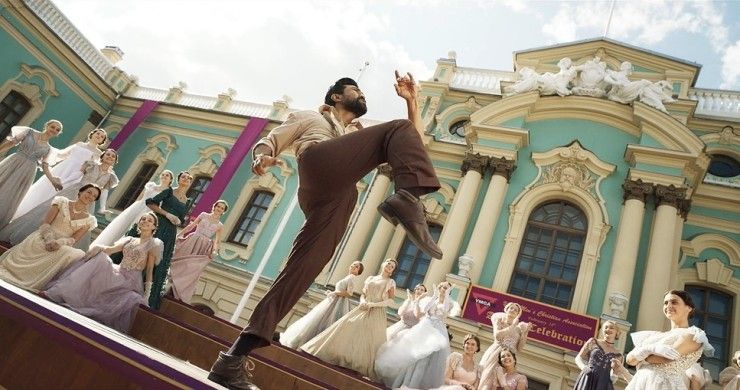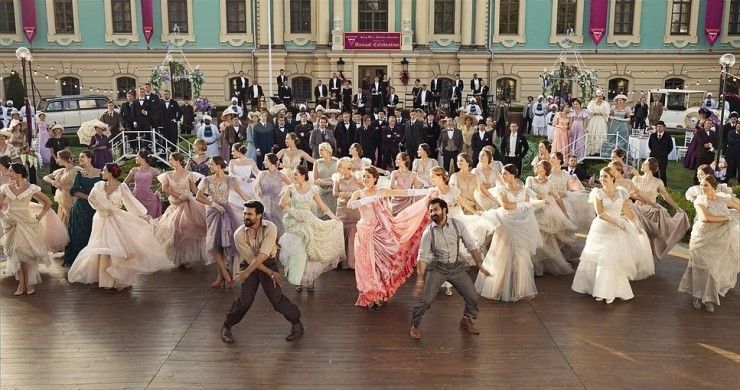This earworm is one we can all still learn from as filmmakers (while still singing along).
Last night, SS Rajamouli’a big-budget hit, RRR, brought home Oscar for Best Music (Original Song) At 95th Academy Awards. The song, “Naatu Naatu“, was a resounding success across the world with members of the public dance alongside Komaram Bheem (NT Rama Rao Jr.) and Alluri Sitarama Raju (Ram Charan) during the screenings, and a music video that is sure to put a smile on your face.
We’re not the only ones reviewing the clip again and again online.
RRR director SS Rajamouli admitted during his vanity lounge stage breakdown that his love for the song still rages on. He often revisits the sequence to appreciate everything from background performances to Prem Rakshith’s choreography tailor-made for the film’s stars.
Check out Rajamouli’s breakdown of the Oscar winner “Naatu Naatu” sequence, then read on to find out what we take away from his lessons on directing and collaborating.
What we learned from “Naatu Naatu”
The first thing that comes to Rajamouli’s mind when watching the footage is the location. Due to the monsoon season in India, the cast and crew filmed the sequence in Kyiv at the Presidential Palace. The colors of the palace and the size of the land were just right for the scene.
However, Rajamouli believed he could not use the location due to the importance he had in Ukraine and thought he could not use it. The Ukrainian team informed him that it would be possible to film on site since filming license in Ukraine are pretty easy to get and aren’t extremely strict about which slots can and can’t be used.

As for the signature dance, Rajamouli had four requirements: it had to be enjoyable, not too difficult, suitable for both actors, and “it had to be fantastic.”
Rakshith’s choreography was matched with the body language of Charan and Rama Rao Jr. to create a spectacular dance their fans have come to expect. Finding a style that suits both actors is not an easy task while finding easy steps that the audience could easily do on their own.
Rakshith presented Rajamouli with over a hundred variations for the 3/4 signature. “I had a hard time choosing the best 3/4 variations for this style,” Rajamouli said.
Rajamouli’s favorite moment of the song comes from the on-set collaboration between costume designer Rama Rajamouli and Rakshith. When Rakshith saw that the suspenders were part of the costumes, he asked if he could incorporate them into the number. After getting his okay, loose suspenders were put on the cast for a quick dance number Rakshith devised that day. Loose suspenders had to be used so the actors could move them around easily, then they were replaced with tight suspenders throughout the rest of the number.
It was the most difficult step of the dance. Rajamouli understood that his number was funny for the audience, but it was a fight scene in the story. Because the two characters are there with a purpose, they cannot fight each other physically. Instead, they have to fight with the dance, which becomes a competition. Everything is fast-paced and designed to have the same energy as a fight sequence.
The composition of Rajamouli’s shot emphasizes the importance of the energy of the dance by never losing sight of the steps of the figures. Using simple forward and reverse tracking shots, Rajamouli was able to capture the kinetic energy of the angry English lead actors and background characters. The director’s style also relies on longer takes. Although he wanted the final shot for the dance sequences to be one take, Rajamouli understood that specific shots were needed to establish the mood and story progression so the audience would know where the story ends. when the song is over.

“Dancing isn’t about how acrobatic you are, how perfectly you can step,” Rajamouli says of the dance sequences in his films. “There are two important things. The first is that you should really, really enjoy your dancing. Only then [the] the audience really gets pleasure from your dancing. And the second thing is, like, every moment of the dance, you’re conveying something to the audience. A kind of emotion.
While the dance sequence may be in service to the fans, providing them with moments that they would want to see and repeat, the act is still in service to moving the story forward. It’s a storytelling element we often associate with musicals and operas, but it’s wonderful to see it in a big-budget movie.
From the collaboration within the team to the knowledge of the montages to bring to the public, Rajamouli “Naatu Naatu” is a truly unforgettable sequence in a film full of unforgettable moments.
From which plan or sequence RRR inspires you as a filmmaker? Let us know in the comments below!
